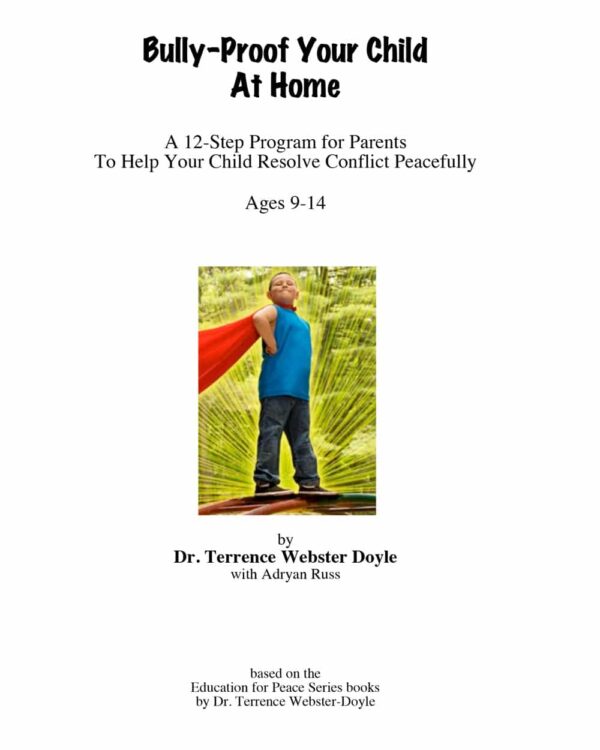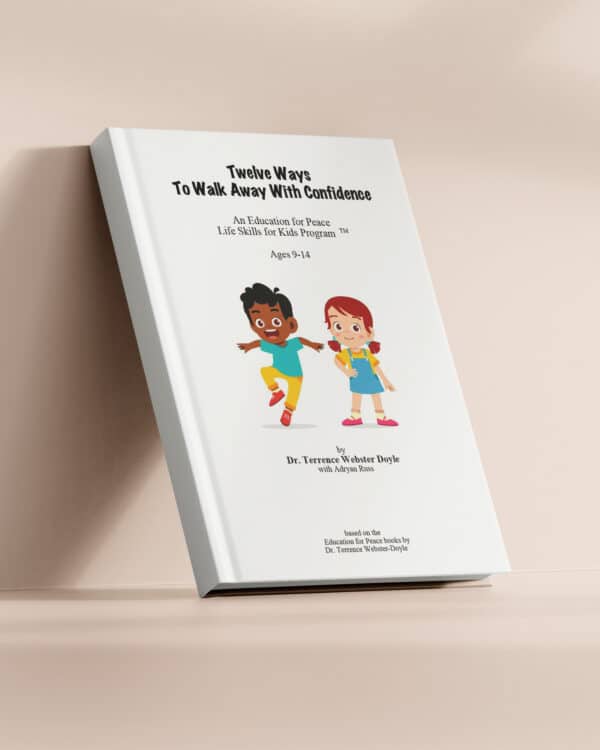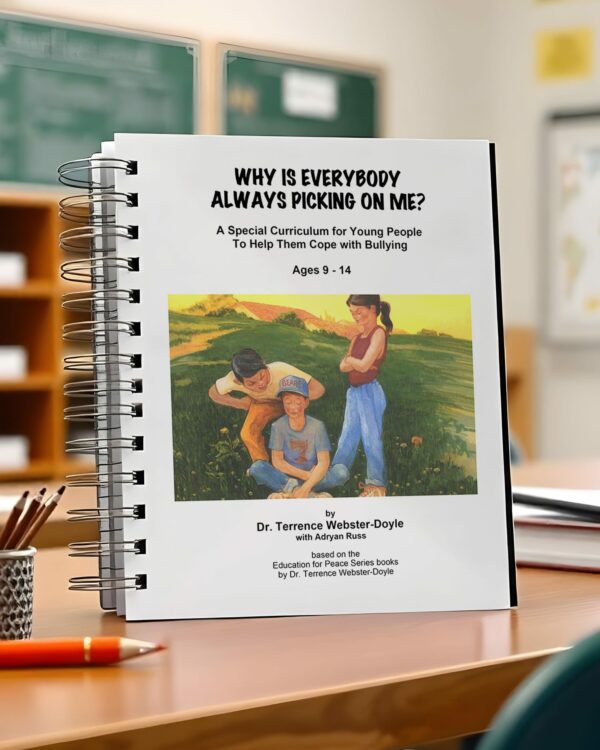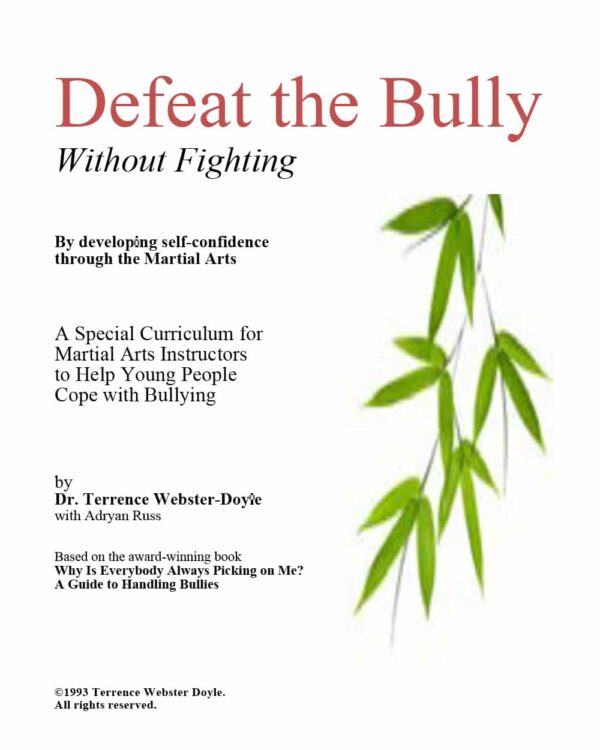Episode #4: Bullying Education Needs to Be Year-Long
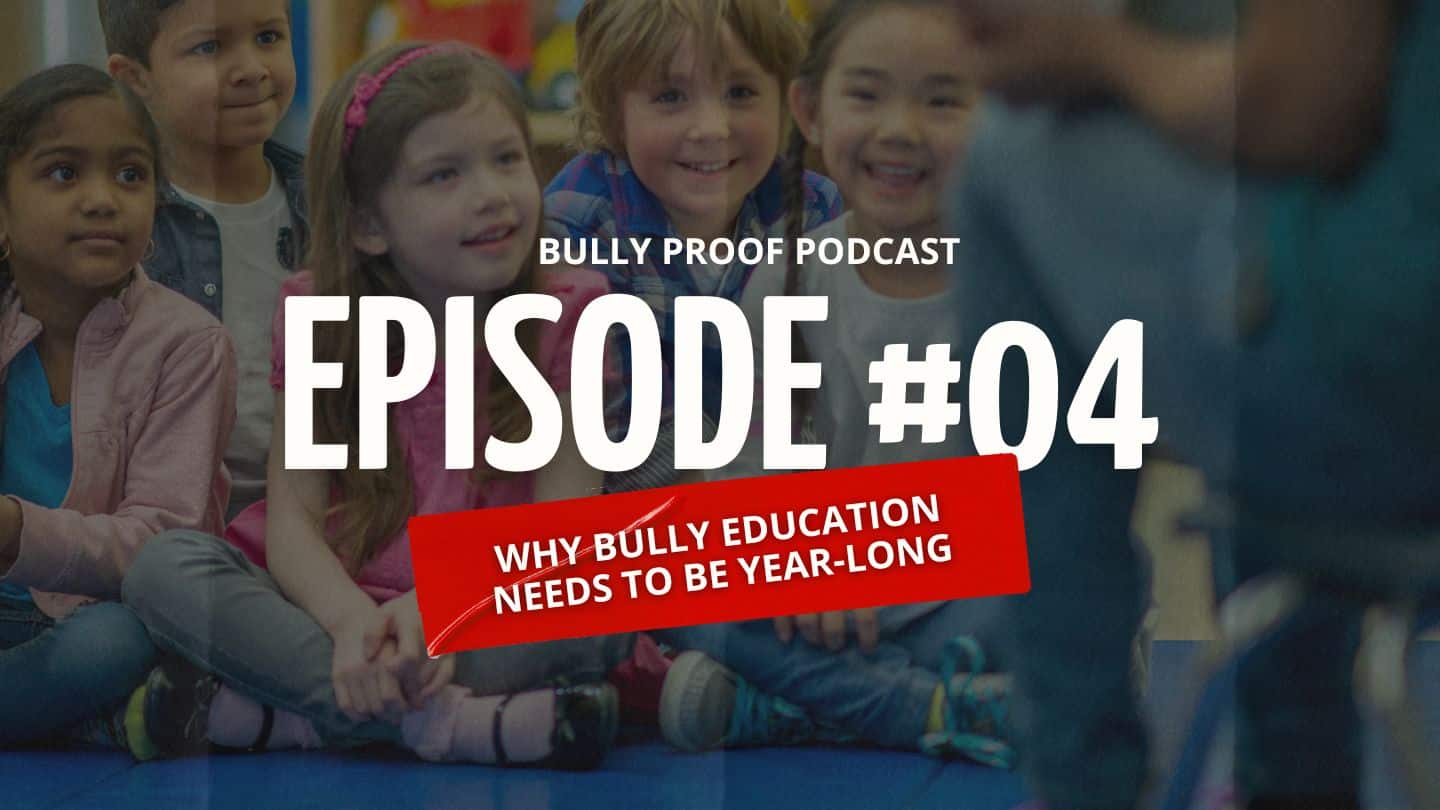
When it comes to bullying education, one-off events like Pink Shirt Day or Bully Prevention Week just don’t cut it. They raise awareness, sure, but real change takes consistency. Kids deal with conflict and peer pressure every single day, not just during a themed week and that’s why bullying education needs to be part of their lives all year.
In this episode of Bully Proof Your Child Podcast, we’re diving into why year-round learning is more effective, how schools and parents can make it part of everyday life, and what small steps make a big difference. If you’re looking for ways to help kids build lasting skills in empathy and conflict resolution, this episode is for you.
We also talk about our weekly online bullying course, which is a practical tool for parents and teachers who want to keep the conversation going long after the posters come down.
Podcast Transcript
Oftentimes, I find that bullying education is really limited to specific days, kind of like Pink Shirt Day here in Canada, is at the end of February, and that’s when lots of businesses and schools really focus on bullying education and promoting peace and inclusion, that kind of thing.
But we really need to be bringing this education year-long and making it very front and center instead of just having one great day, lots of focus on it, and then it’s kind of forgotten. So if you have year-long education, we can really be learning about this very consistently and including it in your everyday life.
It’s also very important to talk about consistently because bullying doesn’t just happen one day. It happens all the time, so if we could be having consistent education about it, then kids and adults can be getting a fuller understanding of how to be managing it and preventing it.
I think when we say it needs to be a year-long education, that can sound a little scary, maybe a little overwhelming, but it really doesn’t have to be. It can be manageable, and you can take it in steps. It doesn’t have to be an overwhelming, scary thought.
No, it’s part of the everyday skill package that you have to carry with you to interact with this society. Bully prevention and resolution is just part of what you need to learn to navigate in this society.
It is. I remember being in school, we would have Pink Shirt Day when everyone wears pink shirts, literally what it sounds like, and there was so much messaging around it, where we’d have assemblies, where they’d have people come in and speaking about it, have brochures, we’d have teachers talking about it, but then as soon as that was over, it was just almost forgotten. It seems like all the effort that goes into that almost wasted just for how much focus was on one special event, whereas having it more spread out has a bigger impact.
Yeah, it does, and it’s in every activity that you’ll ever do. You can be sitting there playing a chess game with someone and maybe you start winning or you start losing and your chess partner calls you a dummy or “hey, you look stupid”. It comes up out of anywhere and so you have to learn some skills to manage or to deal with it.
Yeah, kind of the different aspects of it. You can learn how to be preventing it to begin with, how to be managing when it’s happening, all those different aspects that go into it. I think a lot of focus seems to be, especially talking about my experience in school, goes after the fact, once it already happened, then it goes into punishing the bully, and almost even punishing the victim, in some cases. We need to be looking at it before this is happening to begin with.
Yeah, and then some schools have a zero tolerance. I was never sure just what that means, because bullying still goes on, so if you have zero tolerance, there shouldn’t be any. Or you should deal with it to the point where children don’t want to bully, but that’s just never the case. It’s a clever line.
And even the saying zero tolerance, it almost sounds like if it does happen, it’s going to be punished severely instead of having more rounded education about it.
Yes. Because we’re all bullies in some way or another. It’s part of the human condition and it’s part of the primitive brain that we carry with a fight or flight instinct. So it’s always there and there’s always a capacity to bully. Many people don’t want to talk about it or recognize being a victim of bullying or being a bully, but it’s just part of the culture, so you need to have tools to deal with it. It’s really that simple.
Anti-Bullying Resources
If you just turned a blind eye to it, which kind of seems like saying zero tolerance is turning a blind eye to the situation, it just can make it worse because you’re not addressing it at any capacity. Kids really need to be learning, whether it’s at school or with their parents, well really everywhere, how to be practicing empathy, being assertive without being overly aggressive, about respect and their manners, it really all ties into this.
So when we’re talking about like year-long bullying education, we’re not just talking about, oh what do you do when you’ve been bullied, it’s talking about respect and the confidence and everything that goes into it.
We have the 12 Ways to Walk Away with Respect and With Confidence. It’s a series of thoughts and maneuvers that you can mentally go through to deal with the bullying. You may have to use all twelve, perhaps one works, like just walk away or try to make friends.
The great thing about all of our resources and curriculums is that touch on this, is they can be taught in short bursts. Like it can be 15 minutes that you’re having this lesson with your students or with your child. It’s not like you’re sitting there for hours, or an hour even, and having a big lesson. It can be just short little bursts each day, or maybe you’re talking with them about it, like what’s their experience maybe you’re doing role plays, lots of different things to keep them engaged with it.
Absolutely. And the more you do role plays, the better they become. So they need to start doing some spontaneous things, insult them in a different way and see… no, but then you see how they handle it because they’re going to come at them twelve ways from Sunday.
They’re practicing in a safe environment so that when they encounter it in real life, they know how to handle it.
And it won’t matter emotionally to them. I remember doing work with children and Terrence Webster-Doyle came to visit and we did an activity in a circle, picked a few kids and told them, you know, we’re going to insult you pretty harshly and we’re going to teach you how to deal with it.
And I think that was the meditation part that Terrence was teaching. That when you’re insulted and your fight or flight goes off, your body releases adrenaline and you get angry, or you fight and run away, or you get deeply upset.
So we were hitting home with a couple of these children and we said some pretty mean things and they took it personally and you could see them take it personally. And then they meditated for 30 seconds and used some of the, all the techniques that we were teaching them, and then they had perfect comeback phrases.
What’s interesting about that is if that was happening in a real life situation, probably don’t have that time to like meditate and think about it, but then in the situation where it’s in that safe environment, they do have that time to be able to think of how they’re going to respond. If they are taking it personally, that’s much more of a learning moment for them than if it’s just something that just doesn’t really matter to them at all.
Right. No, we made their fight or flight go off, and watch them deal with it. Now, we show them how to deal with it through meditation, but you get to the point where you recognize when it goes off and you can manage it immediately.
They’re probably much more likely to have someone say something similar in a real life situation when they do take that personally because it really hits home and that’s what bullies are really skilled at doing, is finding those things that are really going to hit you personally.
They find your weak spot. Yeah, they always do. That’s what they do.
So when you’re practicing that, and have an actual comeback and you know what to do with that, that feels really invaluable to be able to learn that.
Yes. Those children, and I think the whole group, will be able to carry that throughout their whole lives, that people are going to say some pretty bad things to you, you just need to learn to deal with what they said, discount what they said. That’s probably the biggest lesson there. Well, I mean, what you said, that really doesn’t matter to me. But I mean, children care very much what people think of them, care very much what people say of them, so this is kind of a desensitation.
How long were the programs that you would work with the kids?
We had 45 minutes with the kids twice a week. We would do the actual physical martial arts for 35 of those 45 minutes because they were young and they have a very short attention span. And I would do it in between sessions. So we would do, you know, 15-20 minutes, pause, take 10 minutes to talk, and then go finish the rest of that. 10 or 15 minute bursts is plenty.
Well, it doesn’t become overwhelming too. 15 minutes, that gives you a good amount of time to have learned something, and then you have a break of a couple days where you can really be thinking about that, using it, maybe kind of meditating on it. And then learn something new. A 45 minutes straight lesson, that’s just way too much information.
Can’t do it, no. And they’re there to get their training and their exercise, and once you take some of the energy out of them, they tend to be better listeners. But again, I mean, the attention span for kids is a lot shorter than adults.
Say the kids go to a martial arts class where they are teaching them some bullying information, and then they’re in school and they’re learning once or twice a week about something, and then they can go home and their parents are talking to them, just small bursts, about this. That’s really grounded information and on a very consistent basis for their learning this. So it’s not necessarily putting all the onus on one person, but if we can, all of us as a community work together, in those different aspects, it’s, you know, the kids are learning so much about it.
Absolutely, and it’s really pretty easy, it’s just a consistent approach to it. And by the way, martial artists can get our program too, so if they want to use it in their martial arts practice, so much the better.
Oh, I mean, they’re great for all over the place. Martial arts schools, summer camps, that’s a great one that camp counselors or the directors can use. Schools, after school programs, at home. There’s so many areas that people could be using the programs.
What’s really important in this overall bullying education, is talking about how it helps both the victims and the bullies, because a lot of the time, there’s a lot of negative focus put on the bullies. Victims are kind of talked about, but from what I can tell, they aren’t really given the support to understand what’s going on and really be working on the root of the problem from both sides of it and not making either one feel like they’re a terrible, terrible person because they’re bullying or they’re being bullied.
I think the data says that almost all bullies were bullied, so bullying begets bullying. And yeah, they tend to be singled out and chastised. And I mean, what it is, is behavior that isn’t welcome. So you change their attitude a little bit too by explaining, bullying, it’s not an acceptable way to get what you want.
Yeah, so and then teaching them a healthier ways to go about doing those things.
Absolutely.
Helping them understand what’s leading to them exhibiting those bullying behaviors and not saying to them, “Oh, you’re going to be a bully your whole life, you’re a terrible person.” Just helping them understand what’s causing them to act this way, and helping them have better reactions.
Yeah, no, I think you’re right. I don’t think there’s enough attention paid to that, I just don’t. I think it’s mostly the victim that we worry about.
I just think of being back in school, it always felt like bullies were either given, like you had to do lines or you escalated to being pulled out of class or you had in-school suspensions or out-of school suspensions, but there’s really no education going on, from what I could tell anyways, about addressing that and helping them find healthier ways.
No, there isn’t. No, no, I think you’re right. I think you hit that right on the head.
Some ways that schools, whether that’s your traditional primary or elementary school, high school, or martial arts schools, any of these other kind of educational ways, I think it’d be good to discuss how they can be incorporating it into their lesson plans. Obviously, one is to have daily or weekly lessons. Daily might be a little much, but maybe once or twice a week like you were doing in your classes, is a good way to start that.
Yeah, I think that’s a good way. I think teachers, especially the elementary school teachers, K through eight, you know, boy, I just think it’d be an easy lesson plan a couple of times a week. You’re building respect that children need to learn anyway in that environment, they need to respect their fellow students, they need to respect their teacher, the principal, school property, whole nine yards, a great asset for teachers to use this.
Like you said earlier, it’s not difficult.
No, it’s really not difficult. 10 or 15 minute lessons, fine. And kids get into role play, you’re reading at a third grade level, role play is fun, you know?
Yeah, absolutely. And dialogue, kids like to talk.
Yeah, they love reading these little skits and they get to be actors and actresses. And I know Terrence was a big proponent of bringing props. A big top hat, a cane.
Yeah, you make it fun.
Yeah, because they get into it, but they get the lesson.
Make it interactive and fun, and who doesn’t like learning that way? Another fun way is doing school campaigns, or, and this usually ties into more Pink Shirt Day or Bully Prevention Week, but you can do this anytime, kids can do some art projects around it or peer led and mentorship programs where younger kids are working with older kids, and you can really combine this and make it a really holistic school approach and make it a lot of fun.
I agree. And these are fun ways to deal with a profound problem, which we covered in our first couple of podcasts, and it’s an issue that can ruin someone’s life. We can deal with it, and we have all these fun ways to deal with it, but never lose sight of the fact that we’re trying to solve an urgent problem.
Yeah, it’s very important. Something to remember about this is that just because it is a very urgent and very pressing problem, is it doesn’t need boring for the kids. Make it fun and they’re going to learn so much better from it.
Absolutely. Absolutely. Like when I was teaching martial arts, I’ve had parents come up to me and say, they think you’re becoming ninjas. I said, right, but I’m really teaching them how to be good citizens. So yeah, they had a blast, but what they got out of it was how to be polite and how to be respectful.
It’s important for us as the adults that are teaching this to not lose sight of that. You’re teaching them extremely important life skills. Maybe if you’re having trouble coming with ideas, you can brainstorm with the kids. They always have great ideas.
They have great ideas, yeah. You can ask, well, who wants to be the bully? Well, what are we going to do? All right. What does a bully do to you? You know, what do you think a bully does?
That’ll bring out their real life experiences, too. And maybe in a less pressured way than just outright asking them what’s happening, but if you’re talking about “let’s role play the bully”, “how’s the bully act?”, then you have them bringing up their experiences without it maybe being so scary to talk about.
So parents also have some things they can do with this. A lot of it goes into having, kind of similar teachers actually, having regular conversations with them, you can be using some of our programs that are built for parents like the Bully Proof Your Child curriculum, because you can use that right at home. Practice scenarios with them, do role plays, have dialogues with them, very similar things to what teachers would be doing with your child.
No, you’re absolutely right, and I think, again, with the parent, actively listening to their child, you can root out when these problems come up and you can help them deal with it, especially with a curriculum that’s designed to do it.
Absolutely, then you don’t feel like you’re trying to figure it out all on your own, you have some help. And then they’re getting from all over the place; they’re getting it from their teachers, they’re getting it from you. It’s really just a great way for them to learn so much from it.
And none of this is going to make bullying go away, but it will make bullying less impactful on that person being bullied.
Which is really the goal.
Yeah, that’s the goal.
Besides the kind of resources we’ve already talked about, we also have a weekly newsletter that has all kinds of bullying information, which can be a really helpful resource for parents and teachers to be bringing in more structured, year-long education about bullying.
So, to wrap this up, it’s really important to remember that bullying education is not a one-time deal. It’s not as impactful if it’s just a one-time assembly or a one-time activity that’s happened over the week. By incorporating it into all kinds of different activities that kids are in, they’re going to be learning really how to manage and prevent it in a really holistic way.
A good starter is be intentional this week about talking to your child about bullying. Start a small conversation and see what’s going on. Is there anybody bothering you? Then from that little nugget, you can build weekly on how to deal with it.
So if you want to learn a bit more about this, we do have our MAP STARS program, which I highly recommend. It has the basic physical activities and then also goes into role plays. And then we have lots of resources of PDF curriculums you can check out. They’re great, you can just download them, print them off your house, or use them digitally.
Year long education really is about teaching kids respect and kindness, helping them manage bullying. Bullying, like you said Gary, is not going to go away, but we can help them really get through it.
